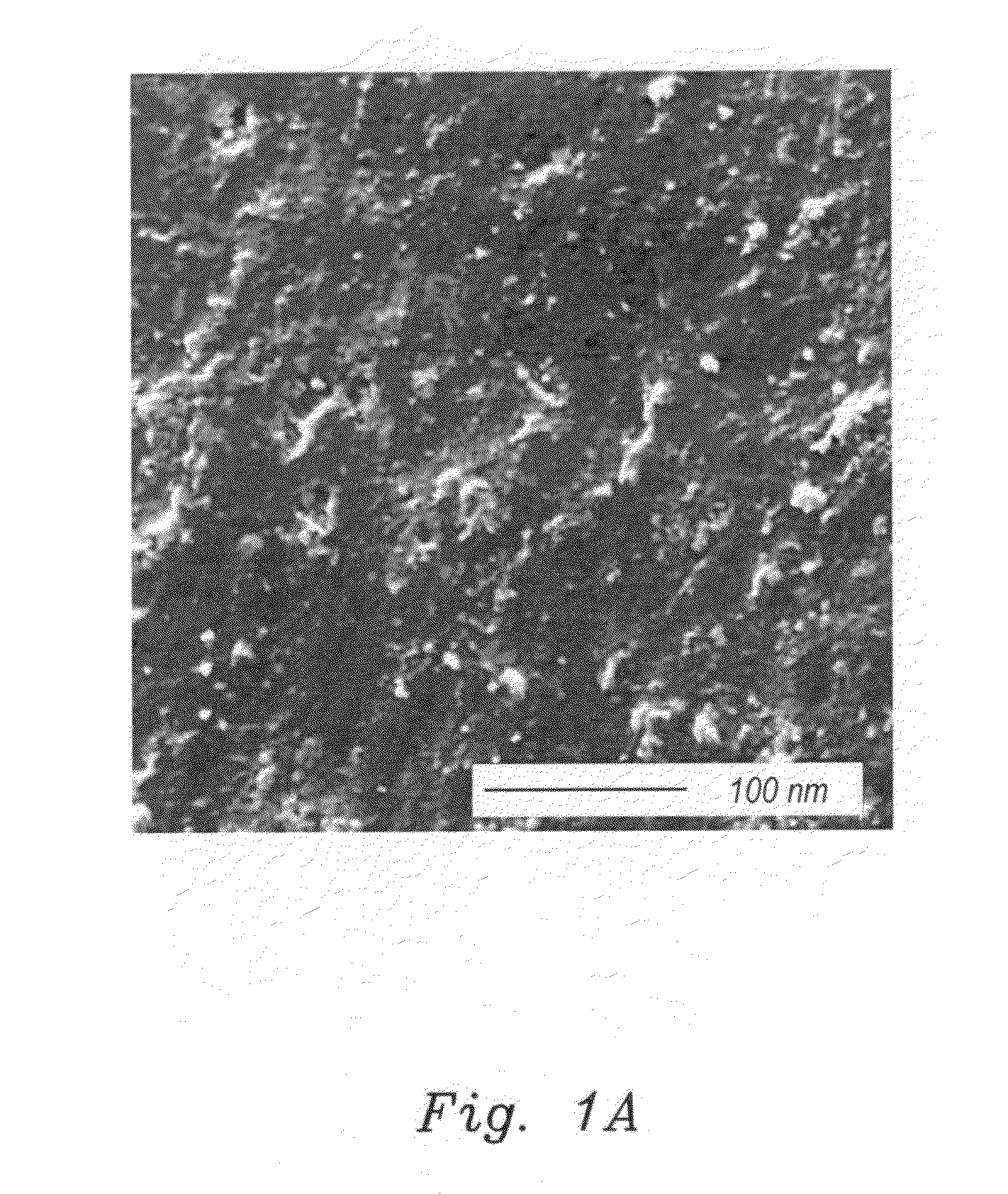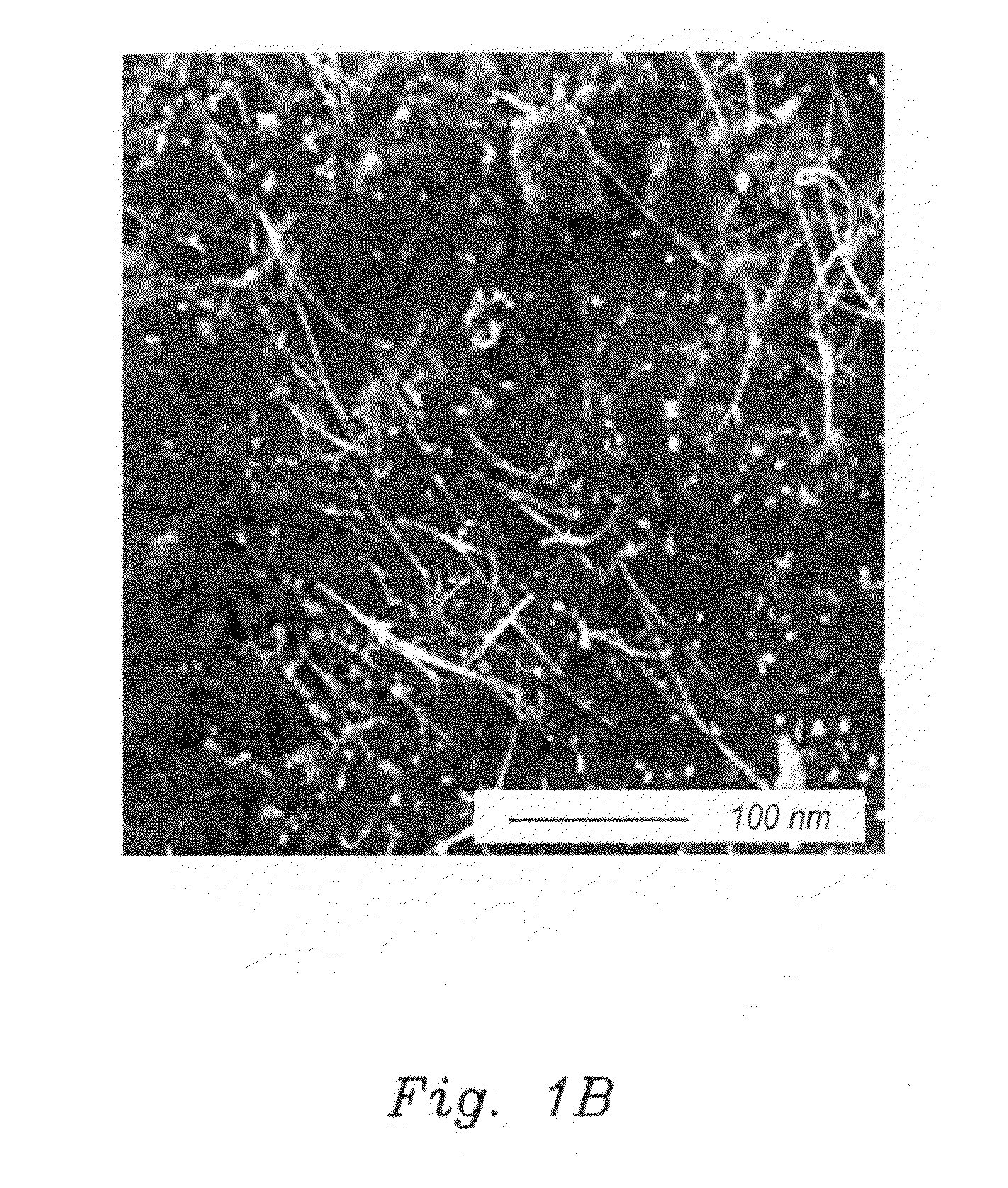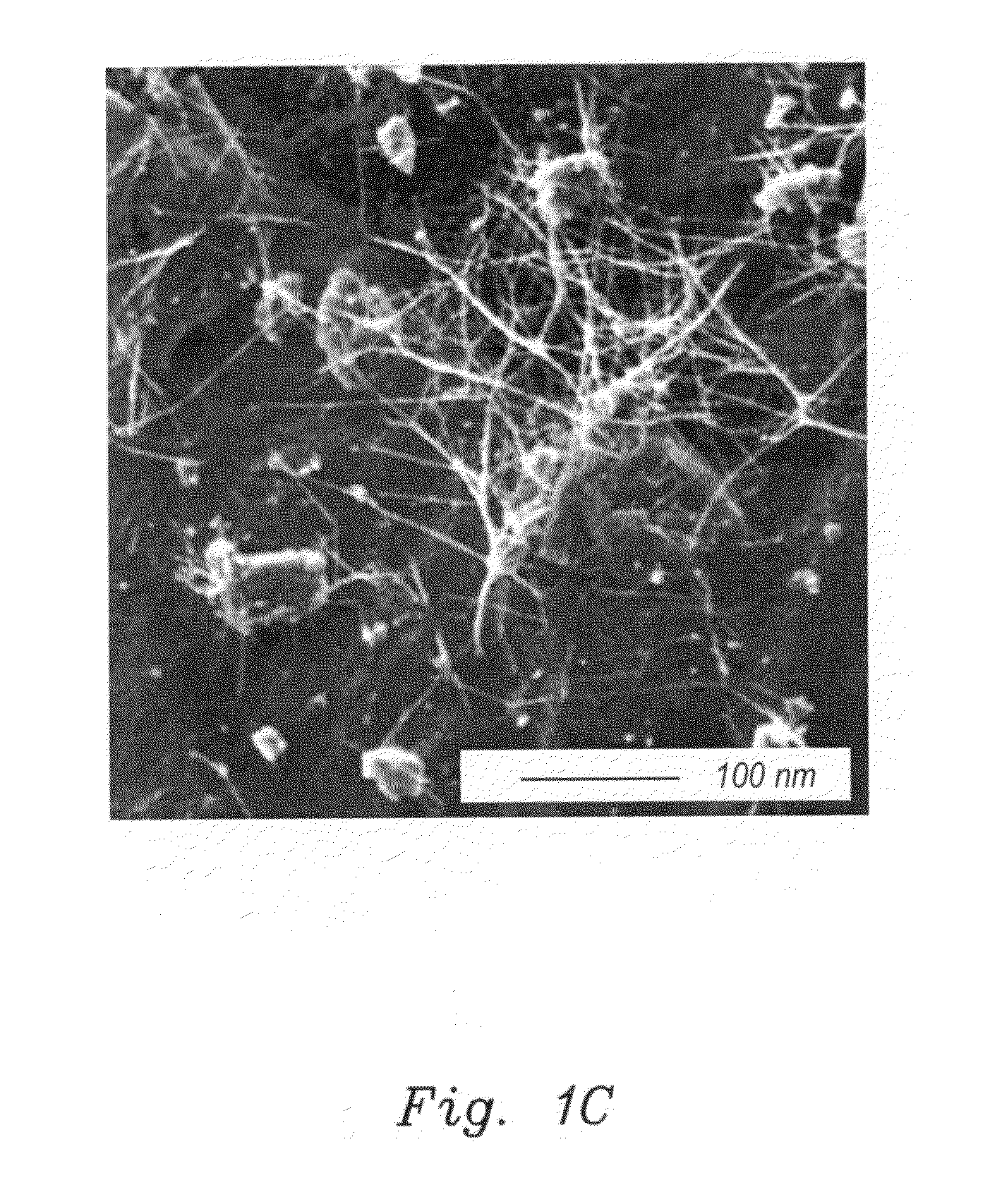Superconductive nanocomposite
a superconductors and nano-composite technology, applied in the field of superconductors, can solve the problems of limited application range of bismuth oxide superconductors, and achieve the effect of low density
- Summary
- Abstract
- Description
- Claims
- Application Information
AI Technical Summary
Benefits of technology
Problems solved by technology
Method used
Image
Examples
example
[0027]Samples of nominal compositions Bi1.93PbO0.33Sr2Ca2.5Cu3.5Oy, were prepared by the acetate-tartrate gel precursor technique. Stoichiometric amounts of analytical grade Bi2O3, PbO, Ca(NO3)3, Sr(CH3COO)2 and Cu(CH3COO)2. H2O were used as starting materials. First, in the sol-gel process, an appropriate amount of the Bi2O3 and PbO was dissolved in 0.2 M H2COOH. After stirring for 2 hours at 90° C., a clear solution was obtained. Next, copper acetate, calcium nitrate, and strontium nitrate were all dissolved in small amounts of distilled water and were added to the bismuth acetate solution with adequate intermediate stirring. Finally, after concentrating for 20 hours at 90° C. in an open beaker, the acetate / tartrate solutions turned into blue or slightly greenish gels. The obtained Bi1.93PbO0.33Sr2Ca2.5Cu3.5Oy, gels were dried in air at 100° C. for 1 day. The mixtures so obtained were pressed into 20 mm disk-shaped pellets at a pressure of P=200 KN / m2 and then calcined at 820° C. ...
PUM
| Property | Measurement | Unit |
|---|---|---|
| Fraction | aaaaa | aaaaa |
| Fraction | aaaaa | aaaaa |
| Fraction | aaaaa | aaaaa |
Abstract
Description
Claims
Application Information
 Login to View More
Login to View More - R&D
- Intellectual Property
- Life Sciences
- Materials
- Tech Scout
- Unparalleled Data Quality
- Higher Quality Content
- 60% Fewer Hallucinations
Browse by: Latest US Patents, China's latest patents, Technical Efficacy Thesaurus, Application Domain, Technology Topic, Popular Technical Reports.
© 2025 PatSnap. All rights reserved.Legal|Privacy policy|Modern Slavery Act Transparency Statement|Sitemap|About US| Contact US: help@patsnap.com



